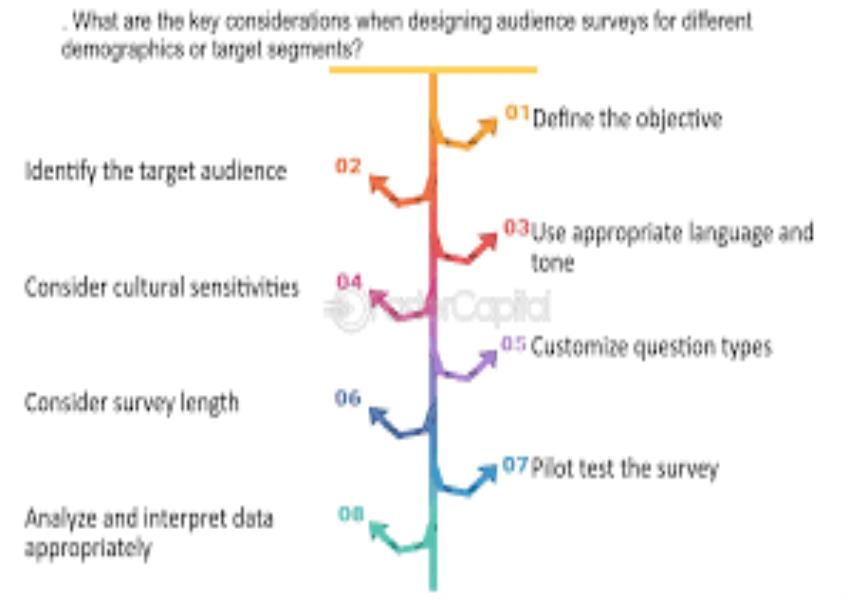Get the latest updates From BL Soni College Bhilwara

What are some key considerations when designing for different target audiences?
Designing for different target audiences requires careful consideration of their unique characteristics, preferences, and needs. Tailoring your design to specific demographics and psychographics is essential for effective communication. Here are some key considerations when designing for different target audiences: Demographics: Age: Consider the age range of your audience. Design elements that resonate with teenagers may not work for seniors, and vice versa. Gender: Be aware of gender-specific design preferences. Colors, imagery, and messaging can vary based on gender. Location: Geographic location can influence design choices, including language, cultural symbols, and even color associations. Income Level: The purchasing power of your audience may affect the design's perceived value and the types of products or services you promote. Psychographics: Lifestyle: Understand the lifestyle and values of your audience. Design should reflect their interests, hobbies, and beliefs. Behavior: Analyze the behavior and habits of your target audience. Design for their specific needs and preferences. Attitudes: Consider the attitudes and opinions your audience holds. Your design should align with their viewpoints. Cultural Sensitivity: Be culturally sensitive and avoid using symbols, images, or messages that could be offensive or misunderstood in certain cultures or regions. Language and Communication: Use language that is appropriate for your audience. Consider dialects, idiomatic expressions, and levels of formality. Translate content when targeting non-English-speaking audiences. Consider accessibility needs for those with language disabilities. Visual Elements: Choose imagery and visuals that resonate with the target audience's culture and preferences. Colors have cultural significance; research color associations in the audience's culture. Be mindful of iconography, symbols, and gestures that may have different meanings in various cultures. Technology and Platform: Adapt the design for the platform and technology preferences of your audience. For instance, a design for a social media audience may differ from a print audience. Ensure mobile responsiveness for audiences that predominantly use smartphones or tablets. Accessibility: Ensure that your design is accessible to individuals with disabilities. This includes considerations for those with visual, auditory, or motor impairments. Emotional Appeal: Understand the emotional triggers that resonate with your audience. Design should evoke the desired emotions, whether it's trust, excitement, empathy, or joy. Credibility and Trust: Build credibility by using design elements that convey professionalism and trustworthiness, especially in industries like finance and healthcare. Test and Gather Feedback: Conduct user testing with members of your target audience to gather feedback and make design improvements based on their insights. Adapt and Iterate: Be prepared to adapt your design based on data and feedback. An iterative design process can help refine your approach over time. Legal and Regulatory Compliance: Ensure that your design complies with relevant laws and regulations, especially in highly regulated industries like pharmaceuticals or finance. Competitive Analysis: Study the designs of your competitors targeting the same audience. Identify gaps and opportunities to stand out. Customization and Personalization: If feasible, consider personalizing designs based on user data to create a more tailored experience. Sustainability and Ethical Considerations: Some audiences may prioritize sustainability and ethical practices. Highlight these aspects in your design if they align with your brand. Remember that audience preferences can evolve over time, so it's essential to stay updated and adapt your design strategies accordingly. Regularly reviewing audience feedback and market research is crucial for maintaining the effectiveness of your design for different target audiences.


